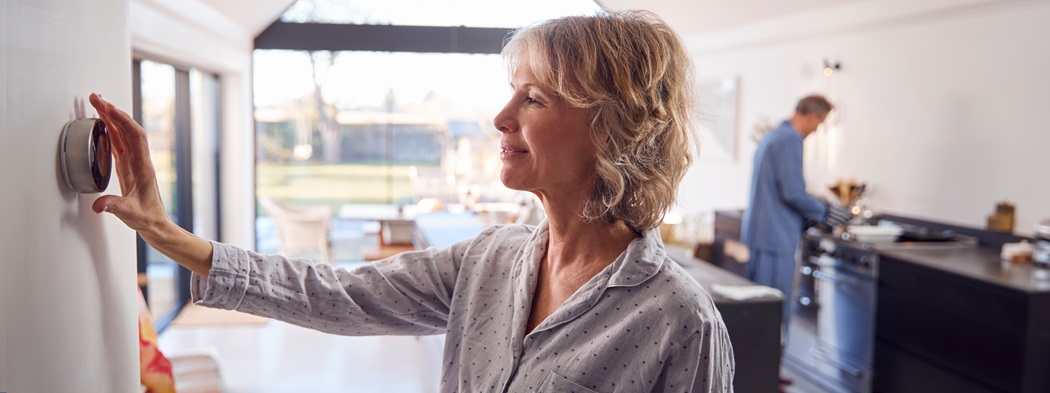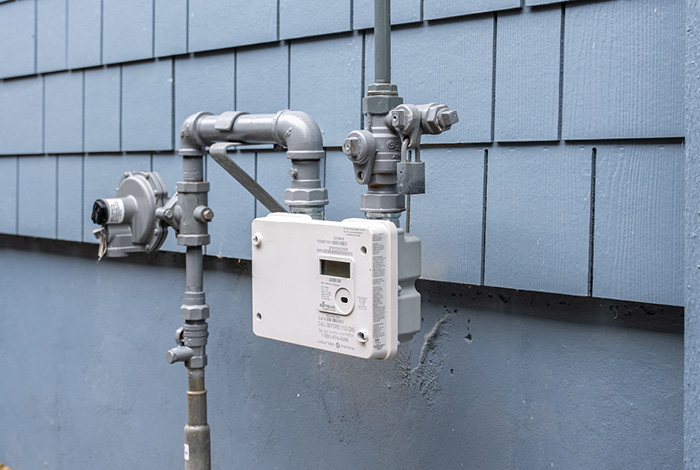Why a dual fuel heating system could solve your home appliance duel
August 8, 2024
Updated: May 1, 2025
Trying to make your home cosier on the coldest days and cooler on the warmest ones could leave you feeling like you’re battling a home appliance duel. But what if we told you that you don’t have to battle it out between adding cooling to your home or upgrading its heating? The answer to your duel could be, well, dual: a dual fuel heating system, that is.

What is a dual fuel heating system?
First things first, though, let’s spell out exactly what it is. To answer that we phoned a friend: Mehmud Iqbal, program manager, heat pump technologies, here at FortisBC. He told us that the system consists of two components: an electric heat pump and a high-efficiency gas furnace. The two components are brought together by a connected thermostat (we’ve even got rebates on those) that allows them to talk to each other.
What are they talking about? No, not celebrity gossip. Instead, something known as a switchover point. When outdoor temperatures drop, it can lower heat pump performance, particularly in extreme cold temperatures.1 So, when that occurs, the connected thermostat switches off the heat pump and switches on the furnace, providing the certainty of a warm, comfortable home, even on the coldest days.
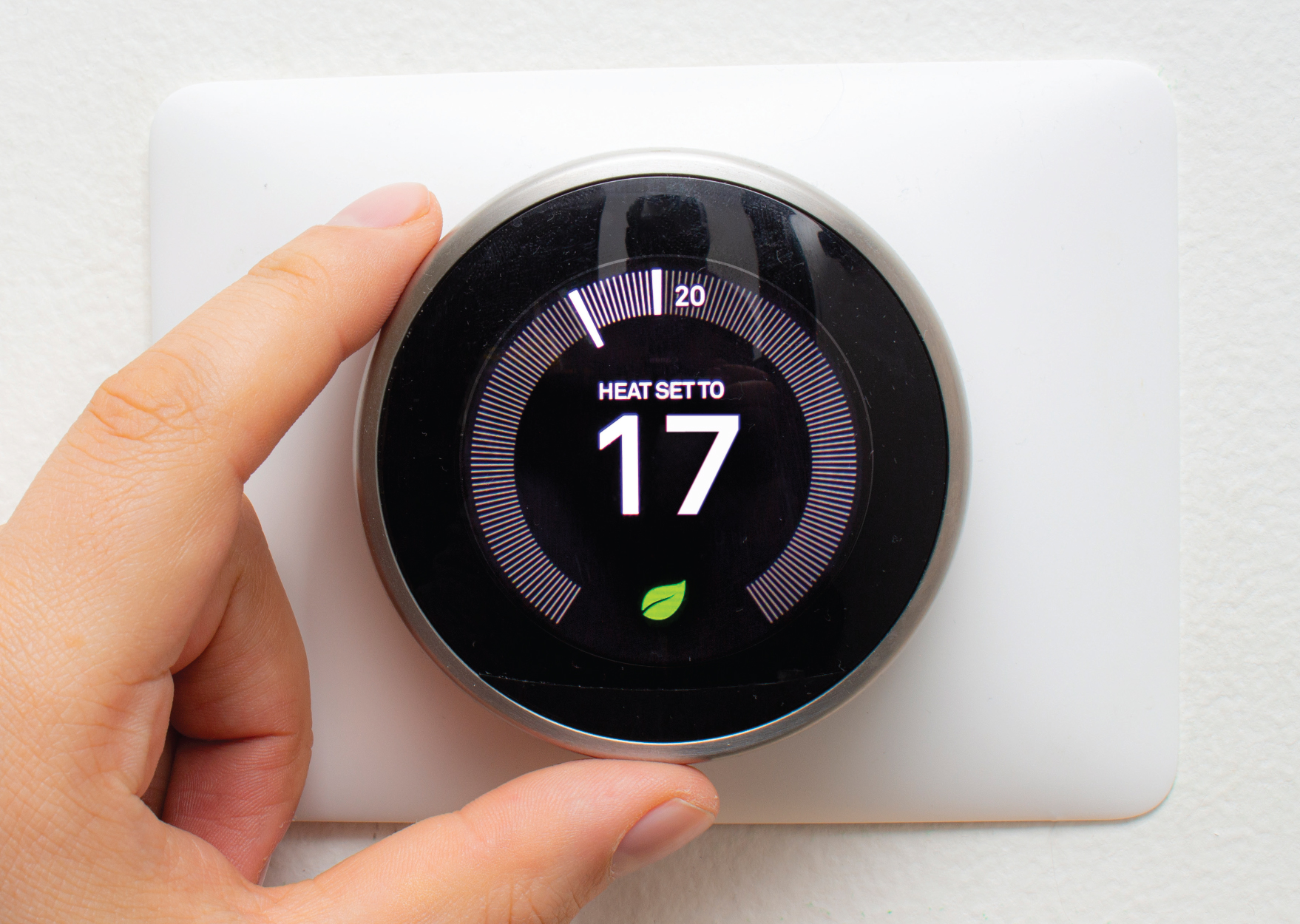
That “certain point,” known as a maximum switchover, is 5 °C in the Lower Mainland and Vancouver Island and 2 °C in the Southern Interior and Northern B.C. We are recommending these maximum switchover temperatures as they align with the set points previously required by the Province of B.C.’s CleanBC Better Homes program. So, how does it work? Using the Lower Mainland as an example, when the temperature is above five degrees, your home is heated by your heat pump. Below 5 °C, it’s heated by your furnace.
There is a lot to consider when you look at how heat pumps compare to furnaces. And we know it’s not exactly a small purchase—not to mention installation costs. So, as you weigh considerations like staying within budget or reducing greenhouse gas (GHG) emissions2, you find yourself exploring your options. We recommend speaking with an HVAC professional to better understand those options and find what system best meets your needs.
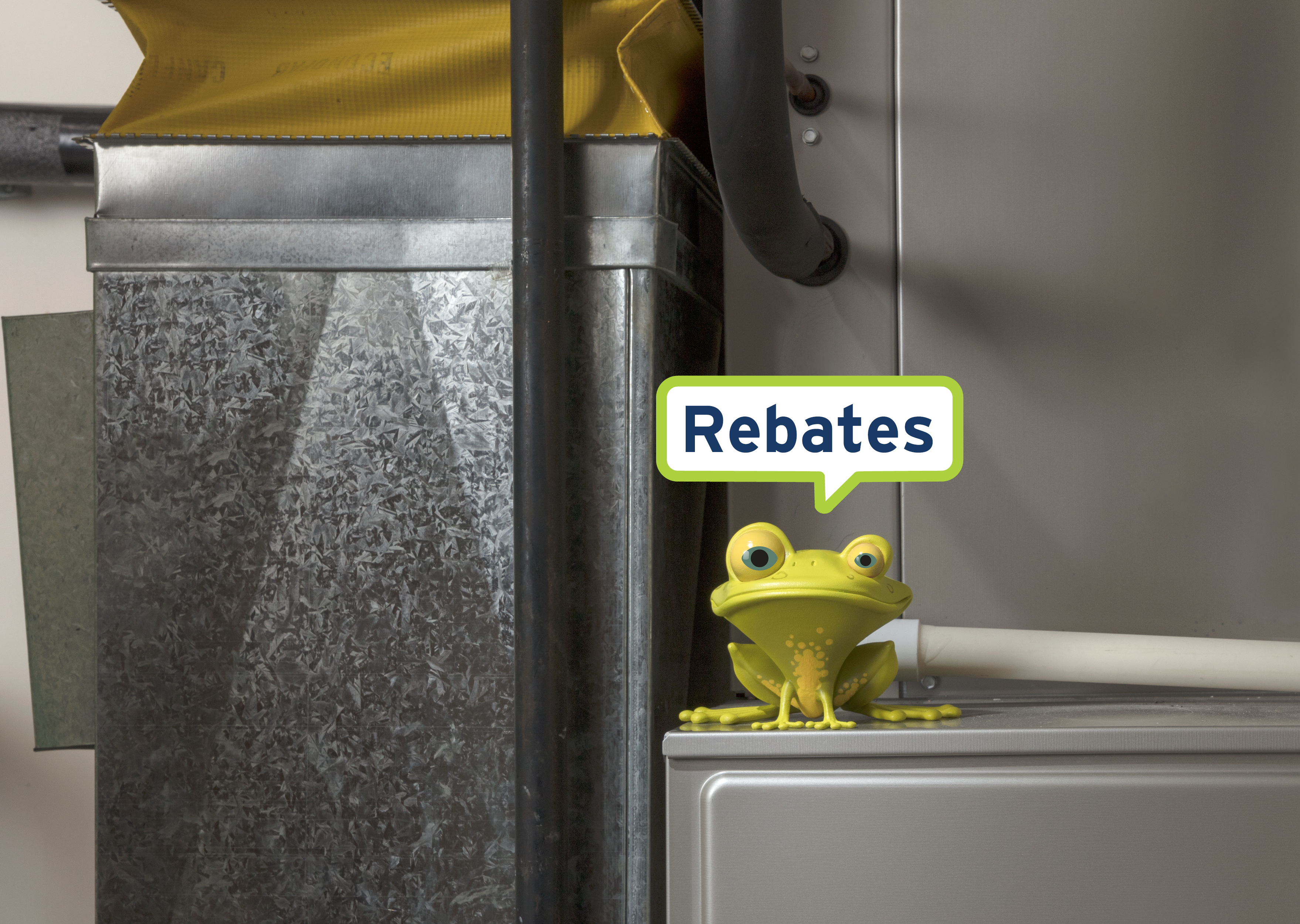
Does FortisBC offer rebates on dual fuel heating systems?
Yes! You may be eligible, subject to terms and conditions, for a rebate of $5,000 or more. The dual fuel heating system rebate helps make it more affordable to get these systems up and running in your home. To qualify for rebates on dual fuel heating systems, you must:
- have an existing gas furnace that is at least 10 years old
- replace your existing system with a qualifying dual fuel heating system that includes a qualifying model heat pump and high-efficiency gas furnace (that operates at 95 per cent efficiency or above.)
- install the system with the maximum switchover temperature for your region (5 °C or lower in Vancouver Island and Lower Mainland and 2 °C or lower in the Southern Interior and Northern B.C.)
- use a Technical Safety BC licensed gas contractor that is a registered member of the Home Performance Contractor Network (HPCN) to install the system
- install the system on or after July 1, 2024
Review the full terms and conditions.
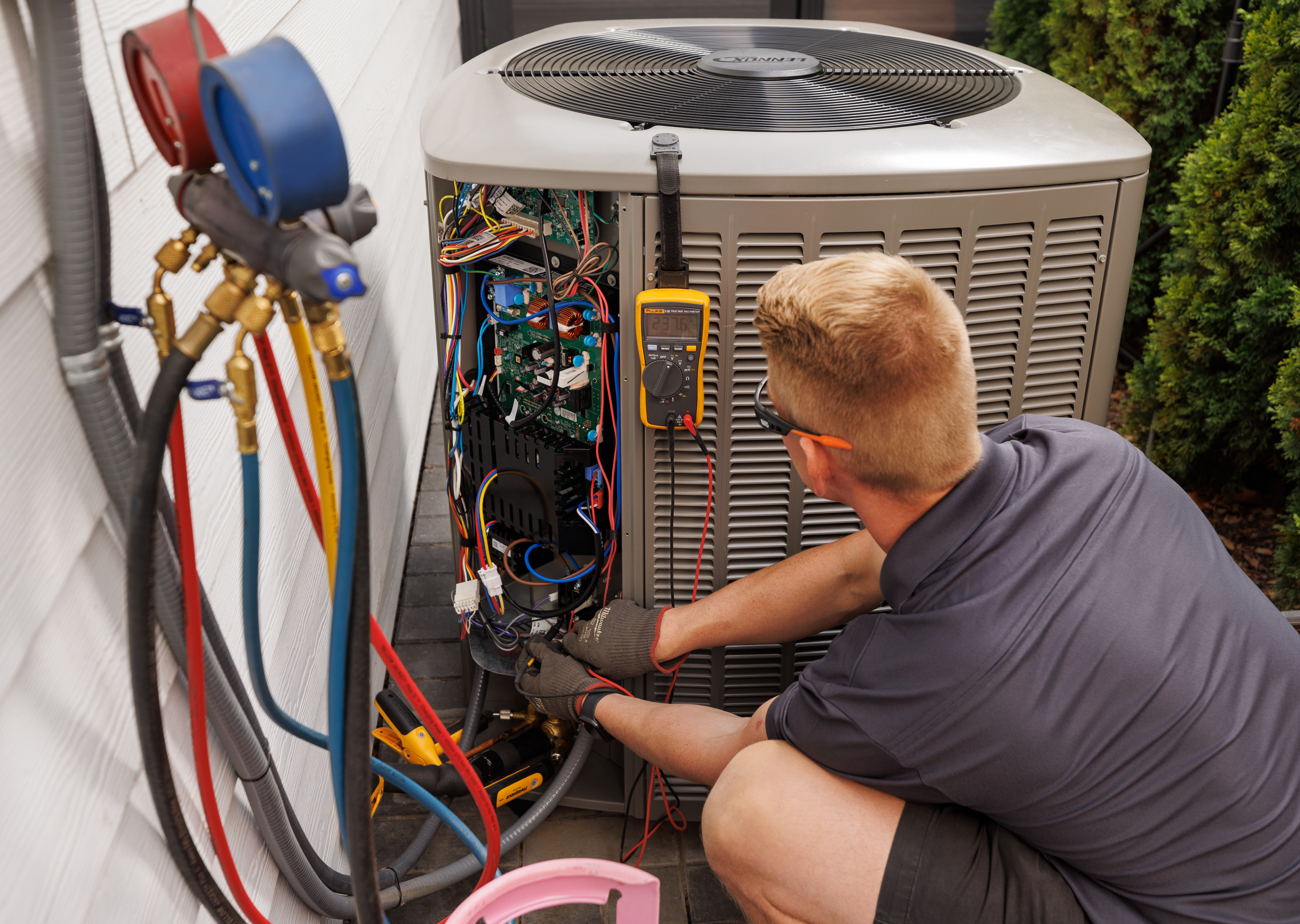
We are supporting dual fuel heating systems because they can operate at more than 100 per cent efficiency under certain conditions. What do we mean by this? Energy efficient systems help you lower energy use, monthly energy bills and greenhouse gas (GHG) emissions because they don’t use as much energy as older or less efficient systems.
A system that is more than 100 per cent energy efficient means at least one piece of equipment, typically a heat pump, is moving heat from one place to another. When there isn’t enough heat in the outdoor air, the furnace will turn on. A dual fuel heating system uses both the heat pump and furnace efficiently and, because the heat pump can operate at more than 100 per cent efficiency under certain conditions, the system overall can achieve system efficiencies greater than 100 per cent.
Dual fuel heating systems are just one approach that we are taking. We plan to invest close to $700 million in our conservation and energy efficiency programs over the next four years. This is an opportunity for us to develop the next generation of rebates and incentives for our customers.
Is a dual fuel heating system right for you?
Now that you know what dual fuel heating systems are, how they work and that FortisBC offers rebates on them, it’s time to dive a little deeper. This system certainly has its complexities. Plus, each and every home is different. It’s important to upgrade to a system that works for your home and budget. We encourage you to gather at least three quotes from different contractors to determine the cost difference between a heat pump only system versus a dual fuel system. You can find a contractor for your area through the Home Performance Contractor Network.
In the meantime, here are a few entry points into thinking about if these systems could work in your home.
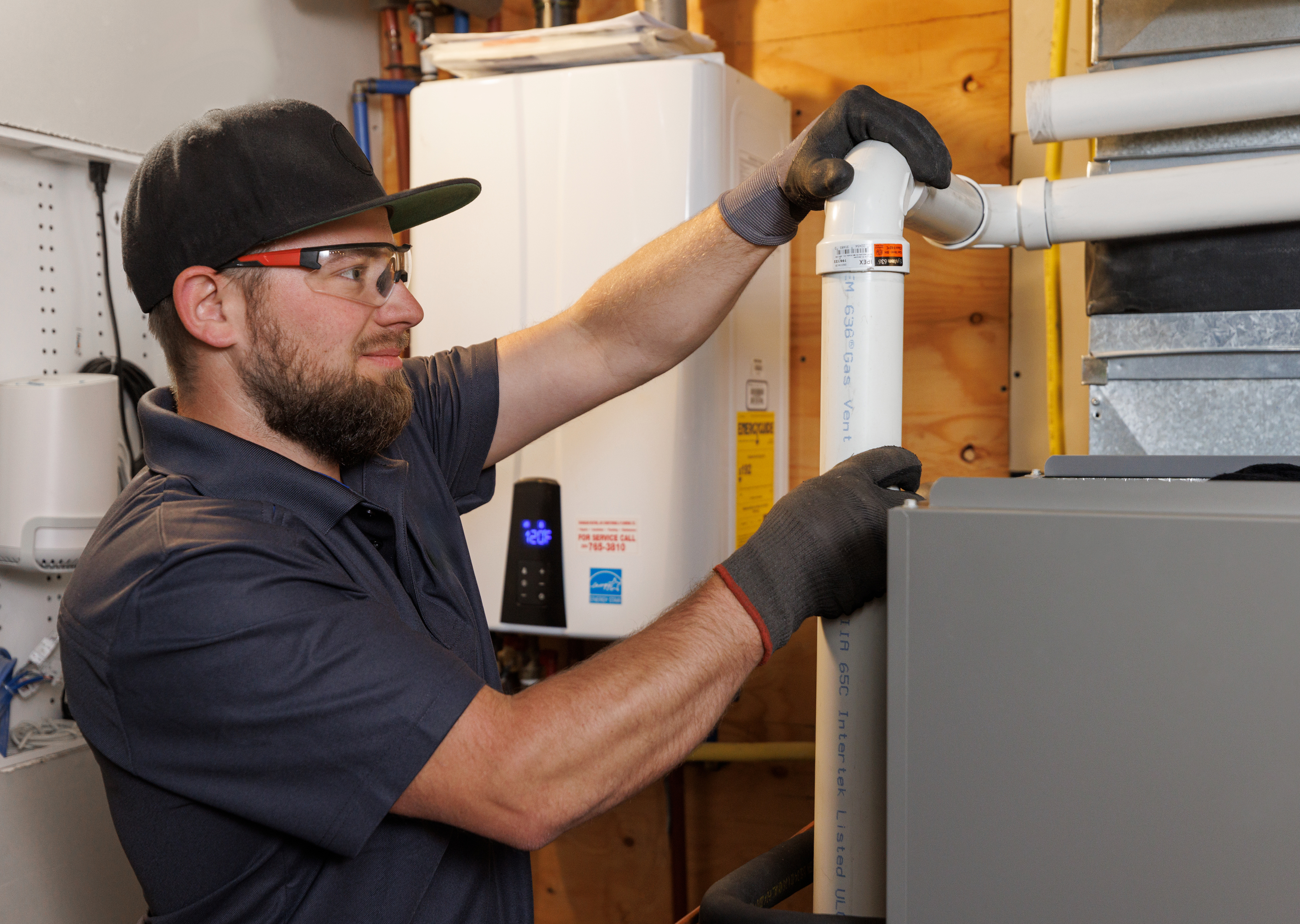
A dual fuel heating system may be right for you …
… if you want to add cooling to your home
There are quite a few homes in B.C.’s Lower Mainland that don’t have a cooling system. So, installing an electric heat pump is a ready-made solution for making the cooling season a breeze—literally.
A dual fuel heating system may be right for you …
… if you don’t have the electrical capacity for heat pumps with an electric backup
With a dual fuel heating system, your home will be replacing gas your furnace isn't using with electricity the heat pump is. Your gas bill will go down but your electricity bill will go up. To spell this out, Mehmud first shared his insights on how homes use electricity.
“Homes have a certain threshold of electricity that they can pull from a panel,” Mehmud points out. “If you rely solely on electricity, then you may need to upgrade your electrical service.” Adding a heat pump with an electric backup to a home that is already at its threshold, then, is logistically challenging. Instead, the system’s furnace negates this need. Further, you could get away with the install of a smaller heat pump since it doesn’t need to do all the heating.

A dual fuel heating system may be right for you …
… if you have wide enough ducts or you’re willing to upgrade them
Mehmud also notes that ventilation ducts play a key role in the feasibility of a dual fuel heating system. They are centrally ducted home appliances. Ensuring that those central pathways are ready to go is a crucial early step. Specifically, that the ducts are large enough to push a larger volume of air through them. Let’s say you have a 1980s-built home. Since it is of the same vintage as leg warmers or hair metal music, your home may have smaller ducts than a newer home.
Back in those days, the ductwork for homes were sized based on the volume requirement of the supply and return air needed for your furnace. To move the same amount of heat, an electric heat pump requires a higher volume of air so you may require a larger ductwork to accommodate it. This could especially be an issue if you are switching from a gas furnace to an electric heat pump.
With a dual fuel heating system, however, the potential need for upgrades is reduced as the heat pump does not need to be sized for the full heating load. While this system could be a solution if you think you may be facing a ductwork capacity limitation, Mehmud recommends that you work with a licensed contractor to understand your home’s unique ductwork.
A dual fuel heating system may be right for you …
… if you want to reduce your GHG emissions compared to running a gas furnace alone
Installing a dual fuel heating system is also an option for customers who are looking to reduce their energy use and associated GHG emissions while maintaining access to the reliability of the gas system.
Since, in a dual fuel heating system, the furnace runs only after the switchover point has been reached, it will reduce your home’s energy use compared to if your home’s heat comes exclusively from a furnace. You are not going to use gas 100 per cent of the heating season with a dual fuel heating system. It only kicks in on the coldest days. Unless we experience another Ice Age soon, that means you’ll use less gas with a dual fuel heating system compared to just having a gas furnace. The reductions can be something to write home about. Government of Canada research tracked a 30 per cent reduction of GHG emissions for the system with smart switching controls versus a gas furnace alone.
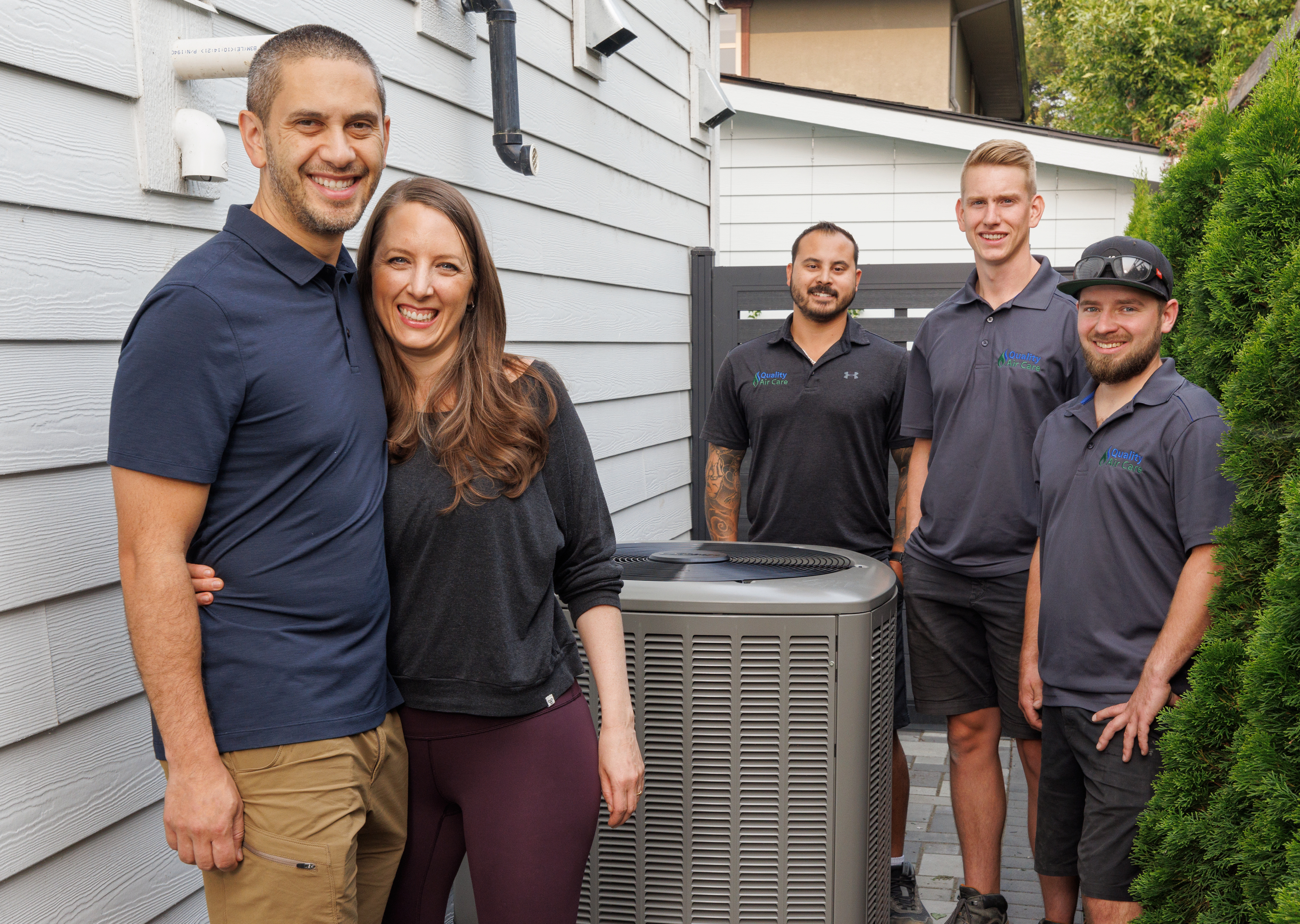
The choice is yours
Remember, there isn’t a right way or a wrong way to heat your home in the winter and cool your home in the summer. You can reduce energy use and GHG emissions by upgrading to a high-efficiency gas system and designating a portion of gas as Renewable Natural Gas (RNG)3, or you can opt for an electric heat pump that can make your home more energy efficient. Or there are myriad reasons why a dual fuel heating system could be the system for you.
“And it’s regional,” Mehmud says. “What works in Vancouver might not work for the Okanagan and might not work for Northern B.C.”
We at FortisBC will continue to look for what works best to help our customers province wide use energy efficiently in their homes and businesses with new, innovative technology and support their efforts to lower their GHG emissions. This search has led to the creation of a permanent dual fuel heating and cooling system rebate program that offers, subject to terms and conditions, $5,000 or more to help with the cost of this upgrade.
We’re always here to help if you have any specific questions; call 1-888-224-2710 (gas customers) or 1-866-436-7847 (FortisBC electricity customers). If you’re ready to install a dual fuel heating systems, remember that costs will vary depending on the unique characteristics of your home. We encourage you to gather at least three quotes from different contractors to determine the cost difference between a heat pump only system versus a dual fuel system. Every home is different and it’s important to upgrade to a system that works for your home and budget. You can find a contractor for your area through the Home Performance Contractor Network.
1B.C. cold climate heat pump field study by RDH Building Science Inc., page 57.
2When compared to standard efficiency, 80 per cent annual fuel utilization efficiency, gas furnaces and boilers.
3Renewable Natural Gas (also called RNG or biomethane) is produced in a different manner than conventional natural gas. It is derived from biogas, which is produced from decomposing organic waste from landfills, agricultural waste and wastewater from treatment facilities. The biogas is captured and cleaned to create RNG. When RNG is added to North America’s natural gas system, it mixes with conventional natural gas. This means we’re unable to direct RNG to a specific customer. But the more RNG is added to the gas system, the less conventional natural gas is needed, thereby reducing the use of fossil fuels and overall greenhouse gas emissions.
